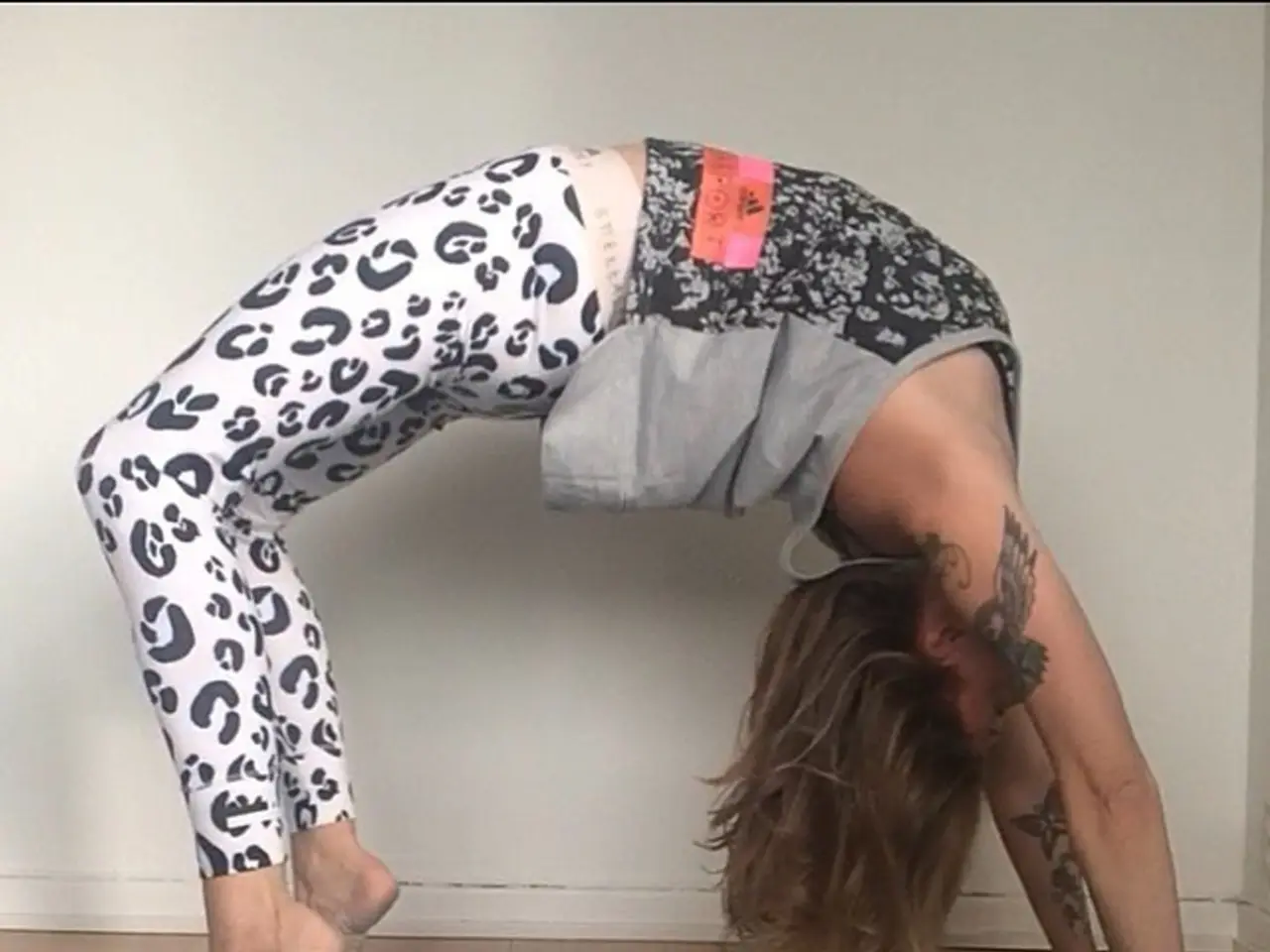Yoga as an Efficient Solution for PTSD Symptom Management
In modern, busy lives, managing stress and tension is crucial for maintaining overall well-being. A growing body of research suggests that yoga is highly effective for long-term stress reduction, offering physiological and psychological benefits that include lowered cortisol levels, improved emotional regulation, better sleep, and enhanced overall well-being [1][2][3][5].
Yoga's effectiveness stems from its integration of three key components: physical postures (asanas), breathing techniques (pranayama), and meditation and mindfulness practices.
Physical postures, such as the child pose, help release physical tension and improve bodily health. By easing stress and promoting relaxation, these postures are essential for coping with life's circumstances [2][3][5].
Breathing techniques, like deep, slow diaphragmatic breathing, activate the parasympathetic nervous system, promoting relaxation. This breathing pattern is common in many yoga styles and is often combined with physical postures and mindfulness focus [2][3][4].
Meditation and mindfulness practices enhance present-moment awareness and reduce mental agitation. These practices, which are integral to yoga, help reduce stress levels and improve emotional regulation [2][3][5].
Specific breathing techniques have been found to be particularly beneficial for stress and PTSD. For instance, Yoga Nidra breathing is a guided meditation that involves slowing the breath and body awareness, inducing deep relaxation while maintaining consciousness. This practice significantly reduces stress hormone (cortisol) levels and anxiety even with short daily sessions (~11 minutes), with longer sessions (~30 minutes) showing enhanced mindfulness and physiological regulation [1].
Deep, slow diaphragmatic breathing is another effective technique, helping to calm the nervous system and reduce anxiety. It is often combined with physical postures and mindfulness focus [2][3][4].
Breathing exercises used in PTSD yoga therapy are designed to help patients manage stress responses by calming hyperarousal, reducing anxiety, and improving emotional regulation. Yoga practices that include controlled breathwork alongside movement and meditation support flexibility, balance, and stress reduction in PTSD sufferers [4].
PTSD, a condition affecting 10% of women and 5% of men, is characterised by symptoms including intrusive thoughts, emotional numbness, hyper vigilance, insomnia, and can sometimes go unnoticed. Traditional PTSD treatments include antidepressant drugs and exposure therapy, but only 50% of patients are cured [6].
A study by American scientists from VA Boston Healthcare System used yoga as a stress treatment for PTSD patients. The study involved 75-minute sessions of yoga focused on connecting the mind with the body, breathing, and physical postures once a week for three months [7].
Uttana Shishosana, or the puppy pose, is another beneficial yoga pose. Similar to the child pose, it has a heart-opening effect, helping to release tension in the chest and shoulders [8].
In conclusion, yoga's multifaceted approach—physical movement, focused breathing, and meditation—offers a powerful, evidence-backed way to reduce chronic stress and aid in managing PTSD symptoms. Specific breathing exercises like yoga nidra and slow diaphragmatic breathing are particularly effective components [1][2][3][4][5].
Yoga's multi-faceted approach, combining physical postures like the Uttana Shishosana, breathing techniques such as Yoga Nidra and deep diaphragmatic breathing, and meditation and mindfulness practices, provides a potent, research-backed method for managing chronic stress and alleviating symptoms of PTSD. These specific breathing exercises have demonstrated significant reductions in stress hormone levels and anxiety levels even with short daily sessions [1][2][3][4][5]. Furthermore, incorporating yoga into health-and-wellness routines, and focusing on fitness-and-exercise, mental-health, and nutrition, can contribute towards overall well-being and stress reduction in daily life [6][7][8].




